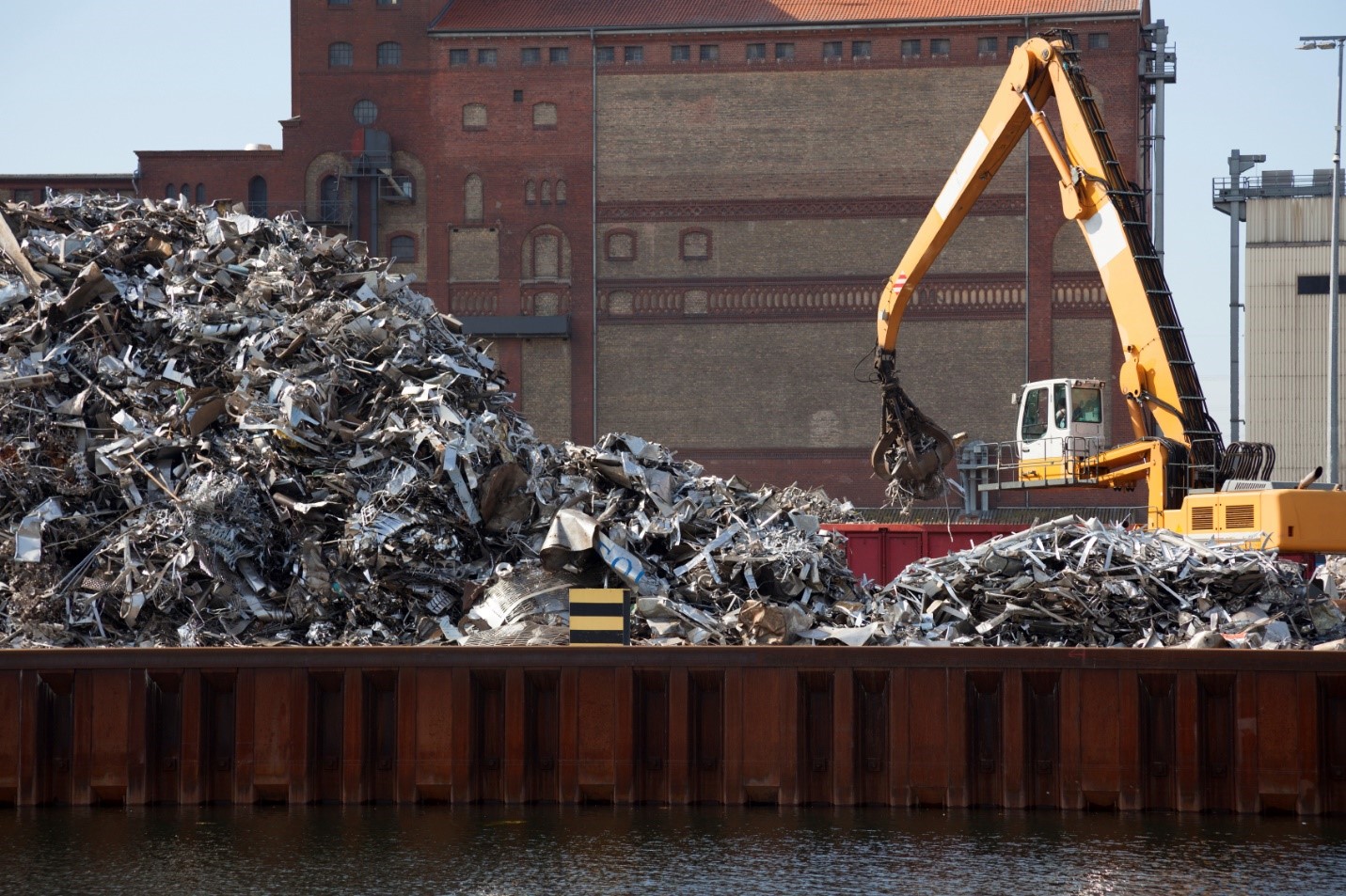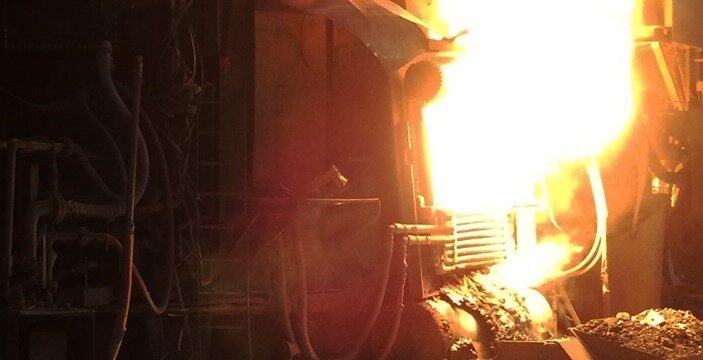National Steel Corporation (NSC), Great Lakes Division plant, which is the focus of this Confessions, was an integrated mill, so a constant supply of scrap was essential to their operations. It is simply not feasible to shut down a blast furnace as the cost to do so runs to the tens of millions of dollars. Also, integrated mills require a fairly large number of workers to run, so unions inevitably have a significant influence over their operations.
Back when I was a National Organizing Director with the USW,I got a call from the president of Local 1299 (Daniel Couture), who represented the National Steel Corporation, Great Lakes Divisions mill in Michigan. He informed me that the mill had replaced the old scrap supplier for a company named “Tube City”, which was (is) one of the country’s largest recycling suppliers, and non-union. He told me that the new company was at a real disadvantage because they were building a new facility on NSC’s grounds and were in a rush to get it done by the time the existing scrap supply company’s contract expired.
The old company was a local company that had its own, established facilities offsite. The local president told me that he questioned why NSC management abruptly canceled the old company’s contract and that there were rumors of kickbacks from scrap companies (disclaimer).His suspicions were heightened due to the complexities of the supplier switch and the time constraints on the changeover. He wouldn’t elaborateon the rumors, and it wasn’t relevant to the task at hand (getting the new unit organized as quickly as possible), so I didn’t pursue it.
Tube City was entering the Great Lakes facility as a non-union subcontractor but were completely dependent on USW members to facilitatetheir onsite construction. The union members didn’t like subcontractorsin general, even the union ones, because they were taking away jobs from USW members and the local union hall was always fighting for as many dues-paying positions as they could get. This animosity led some members to do anything to sabotage the project. In fact, all the subcontractors in the facility were subject to daily harassment.
The local president gave me the contact information of the USW Committeeman (Harry Gray, Union Representative) in the plant who was facilitating the cooperation between the USW and the Tube City team.
When I spoke with Harry, he explained that Tube City hadn’t hired anyemployees, yet. I asked him if we had a list of occupations they neededand if he thought we could force them to let us supply the qualified skilled and unskilled applicants to them. He said he thought he could, since he had a good relationship with the setup team on the ground and, without union support, they were not going to get their operations setupin time.
At first, we had problems with the plan. Tube City management said they had their own process and employment agencies they wanted to work with and didn’t need or want the union to interfere.
In response, the local president set up a meeting with the mill’s management team to complain that his members were being given job assignments by Tube City management and they refused to take any job directions from them. The Committeman directed the USW union operators to avoid any communication with Tube City management and slow down any work assignments (in other words, they were to “find something else to do”), which led to the subcontractors pulling their hair out. Tube City was in danger of not completing the prep work on time. Harry was really pushing them to reverse their decision.
Harry Gray was in a pickle because he was defending the members and trying to balance the anger from field supervisors, all while upper management was coming down hard and threatening disciplinary measures asa work slowdown was a violation of the contract. I got an angry call from USW District 2 Director, Harry Lester, who said he was going to pull the plug on the organizing campaign if the slowdown activities didn’t stop. Harry Gray and I went to the District office to assure Lester than no concerted slowdown activities were taking place. I don’t know if he believed us but, after the meeting, we laughed about how mad he was; he was physically in our faces waving his arms around.
After the meeting with Harry Lester, I stopped in the See Kim Siegfried while I was at the Pittsburg, PA USW International building. He was the Executive Assistant to the International USW President, Leo W. Gerard. I convinced him to call the president of Tube City, who Siegfried knew, to convince him that cooperating with the union would bebeneficial to the timely completion of the Great Lakes Steel project. After one phone call, I was told that the on-the-ground Tube City management would cooperate. I don’t think they really understood the scope of cooperation we were pushing for, nor did I care.
We still had a few months before the transfer of subcontractors was set to be completed. After I got the list of occupations, I contacted a vocational and job placement school and supplied them with the list of certified job skills I needed to meet Tube City’s needs.
This was in 2001, years after former President Clinton had pledged 3.5 billion dollars to create empowerment zones in economically distressed communities across the country. I had already prepared organizing strategies for these zones, including Atlanta, Baltimore, Camden, Chicago, De3troit, New York and Philadelphia.
In Detroit, I hired an established United Farm Workers team of eight that had set up shop on the southwest side of Detroit and established trust with the heavily Hispanic population in the area. It was named the Chicano Development Centerand they assisted immigrants establish themselves in the country. A bigpart of the Detroit empowerment zone ran through this area.
I had my organizers start interviewing Tube City applicants at the Center. Applicants were told right off that the job was for a union shopand they were asked to sign a union authorization card during the interview, as we observed their reactions. It was comical to watch theirexpressions, body language and verbal communications. The applications for the ones who didn’t want to sign a union authorization card or hesitated were shredded as soon as they left the office. It took my teamabout a month to find 60-70 people acceptable to both the company and us.
The acceptable applicants were hired, but they had to wait for the date the new contract began for full employment. In the meantime, some training was being done, but the delay still meant that some people would drop out and we had to replenish them. We kept waiting for something to go wrong; we couldn’t believe the company would actually let us supply the voting unit.
The day of the election, the first vote took place at 7 AM. The National Labor Relations Board (NLRB) agent had to be on location at 6:30 for a pre-election meeting. She had to escorted in from the security entrance. It was the middle of winter and she slipped and fell,and her election materials scattered all over the parking lot. Some people rushed over to help, but she was screaming at them not to touch anything as the NLRB process required that the maintain the integrity ofthe election and only she could touch anything related to the vote.
The agent came into the staging area wet, angry and loud. Some of theworkers started yelling back at her. The situation started getting out of hand and I had to bring everything back under control. The ironic thing is that I really didn’t understand why she was yelling at everyone; it wasn’t their fault that she fell.
Despite the drama (or because of it), I was glad that I had stayed inMichigan. At this point in my career with the unions, it was hard for me to attend many elections and vote counts because of my loaded schedule across the country.
After the votes were counted, the election results were 100% of the votes for the union, the only time (in an election of this size) this had happened for my team! Like I said earlier, this is a very rare occurrence, but I also hoped that the people reading this would learn something. Tube City was so far in crisis mode that they let their guarddown and let the union pick their employees. Tube City had a plan and business culture that was right in the first place. They should have planned better for the pressure the union workers would put on their preparations; after all, they had to know there would be pushback from the union, especially when they were getting what they thought would be aunion-free facility in the middle of a hard-core union playground.
To tie all together, there actually was foul play involved in the beginning and heads did eventually roll. This all started because the union members were used to a local supplier and the daily routines they followed; the disruption put them on edge. It wouldn’t have progressed further if rumors about kickbacks didn’t surface, which further infuriated the union.
The scrap company payoff rumors ultimately came to a head before the election took place, when an anonymous email reached senior executives at NSC. The allegations were explosive: James Squires, an NSC Executive Vice President, had extorted millions of dollars in kickbacks from a scrap iron supplier which, in turn, had overbilled NSC $1 million to $3 million annually for a seven-year period. (For an in-depth review of the investigation, see Fraud Magazine’s 2010 Preventing Kickback Schemes.)
This was an especially painful event for both the company and the union, because James Squires had been hailed as a “self-made man” who advanced from a unionized mill laborer to executive over the course of his 42-year career and had professed to be the pinnacle of financial stewardship. Nevertheless, in August 2001, Squires pleaded guilty in Federal Court and was sentenced to two years imprisonment in 2002.
Disclaimer
I want to make it perfectly clear: Tube City was never implicated in any scam nor was there ever any hint of impropriety or unprofessional behavior on their part. They were simply caught up in rumors involving another company in their industry.



